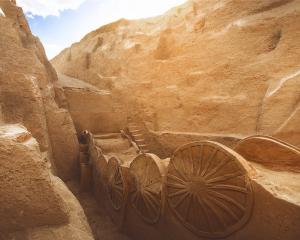
It was at Stonehenge that Thomas Hardy had his tragic heroine Tess of the d’Urbervilles tracked down and arrested. When I first visited myself, we wandered across the downs with no constraints or waiting queues.
Today you can view the great Sarsen trilithons from a safe distance but that is all. Whatever its ultimate purpose, there can be no doubt that it was a place of congregation, with a deep interest in the annual movements of the sun. But is it also unique? Are there other Stonehenges?

A circular ditch enclosed two rings of small circles. Extensive excavations followed, and the small circles turned into holes that had once contained massive oak posts. This site, known as Pömmelte after the district in which it was found, has stimulated much interest because, when you superimpose the plan over that of Stonehenge, they are almost identical.
The difference is while the great stone of Stonehenge were hauled to the site from a great distance, the oak posts of Pömmelte were more likely floated down the nearby Elbe River before being erected. With another match, the two were constructed at about the same time — 4500 years ago.
Stonehenge is part of a much bigger ritual complex, that includes the avenue and Silbury Hill, which, at 40m-high, has a similar volume to the Egyptian pyramids. And nobody knows its purpose.
Perhaps the grave of a great prehistoric king lies within. Pömmelte, however, also has associated buildings not matched at Stonehenge: an extensive settlement of about 140 long houses, each large enough to house a nuclear family with grandparents, and like Stonehenge, the great oak circles were centres of solar observations.
Today, the site has been reconstructed, and it attracts at least 40,000 visitors annually. They will leave in the sure knowledge that, like the great medieval cathedrals, there was a much earlier pan-European religious cult, centred on the sun.













